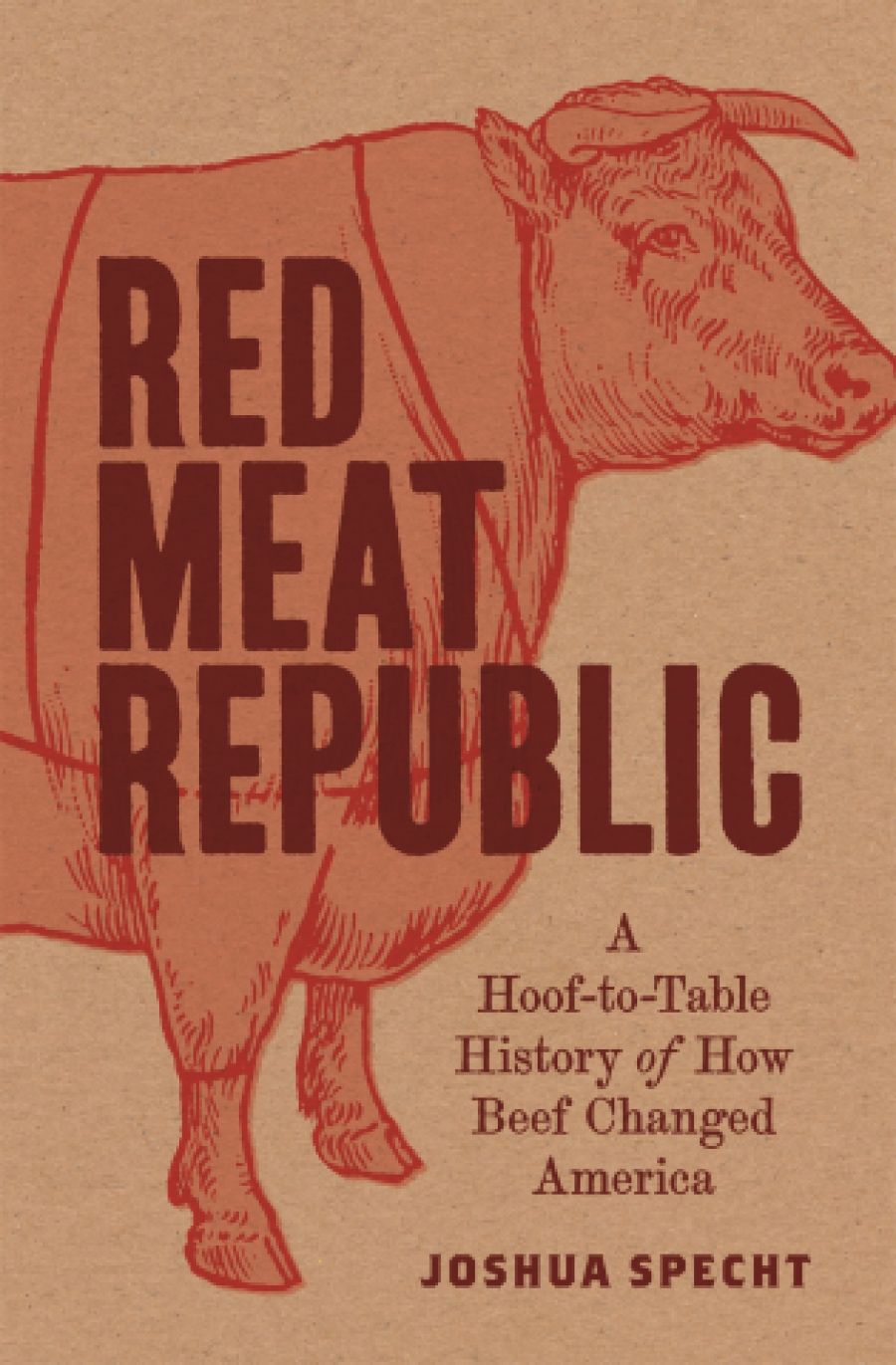
- Free Article: No
- Contents Category: History
- Review Article: Yes
- Grid Image (300px * 250px):

- Book 1 Title: Red Meat Republic
- Book 1 Subtitle: A hoof-to-table history of how beef changed America
- Book 1 Biblio: Princeton University Press (Footprint), $53.99 hb, 339 pp, 9780691182315
Specht, an American historian teaching at Monash University, has undertaken the ambitious task of charting the various historical factors – political, economic, technological, social, and otherwise – that have influenced the formation of the US beef-cattle complex. Covering a remarkable breadth of original source material, Specht describes the period from the settlement of the Plains country in the late nineteenth century to the ‘meat riots’ of the early twentieth century. In a clever chapter structure, the book leads the reader through histories of War, Range, Market, Slaughterhouse, and Table, comprising the major elements of what he terms the ‘cattle-beef industry’. The core of Specht’s analysis is that the cattle industry, and its dissected product beef, has fundamentally shaped the contemporary geopolitical landscape of the United States, often in ways that have been rendered invisible by the passage of time. This is particularly true of the foundational violence and dispossession of American Indians and the hunting of (native) bison to near extinction, a devastating history brought about by the aspirations of ranchers to expand their cattle enterprises.
In his synthesis, Specht carefully navigates the dual roles of the market and the regulatory state in determining patterns of industry development. This is especially the case with the regulation of cattle markets where collusion facilitated price fixing at sale yards and surplus labour available to slaughterhouses meant that the poor treatment of workers was rife. The advent of particular technologies and automation, with applications to the movement of cattle across the country and their butchering, also played a role in guiding changes, as did the centralisation of the beef industry among the ‘Big Four’ agribusinesses that still dominate in the US today.
The US-centric view of many of these trends means that Australian readers may find themselves at a disadvantage with some of the US pastoral nomenclature. Cattle ‘ranching’, ‘antebellum ranching’, and ‘meatpacking’ are all concepts particular to the United States, whereas in Australia ‘farms’, ‘stations’, and ‘meatworker/abattoir worker’ are the lingua franca. Though a superficial issue, this does point to one of the difficulties of Specht’s task: moving between broad socio-economic trends while also describing the local instantiations of relations that ultimately make for the most compelling reading. The most successful and enjoyable parts of the book, and there are many, are those where Specht steps away from chronicling historical events to describe trends in broad terms, illustrated with vignettes from personal diaries and oral histories. Finding the intimacies of the beef industry seems the most powerful means of communicating its transformative impact on the United States.
Specht has avoided the recent push within the social sciences and humanities to take what some have described as an ‘animal-centric position’ on meat consumption, or to extend ideas of personhood to include non-human animals. Likewise, though the environmental impacts of pastoralism are flagged in parts, they are not the focus of Specht’s work. While the historical, human-centred approach may not appeal to the appetite of every reader, it is from this perspective that Specht is able to detail, for example, the macabre spectre of the slaughterhouse, of human flesh decaying through the unsustainable physical demands of dismembering bovine bodies. We also learn that the modern-day factory assembly line derives its origin from the disassembly lines of the American slaughterhouse, namely the pork packinghouses of 1860s Cincinnati.
Red Meat Republic’s ambitious historical scope makes it an important contribution in laying bare the foundations of beef in the formation of the United States. Such is the potency of its message that one hungers for a similarly incisive book to be written of Australia’s own beef-cattle complex. Pastoralism’s domination over the Australian landscape is maintained by the perpetuation of values, policies, and practices underpinned by the nostalgia of settler-colonial history. Understanding the emergence of the cattle-beef complex and the mythology surrounding ‘Aussie farmers’ and ‘Aussie beef’ may go some way to redressing the power that these narratives have in guiding Australia’s political economy.


Comments powered by CComment